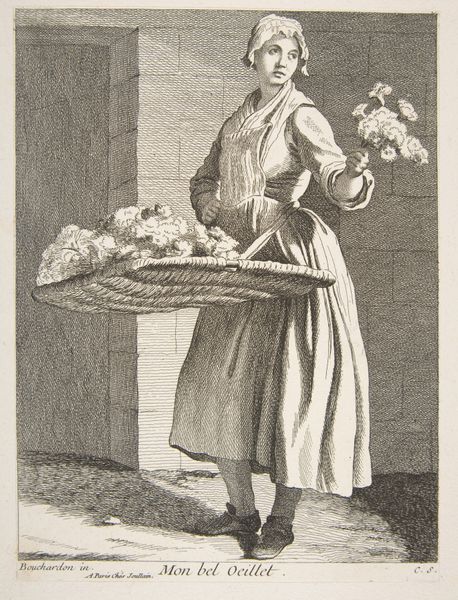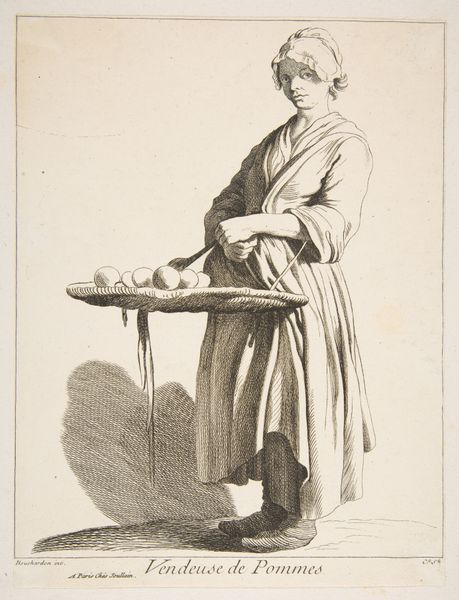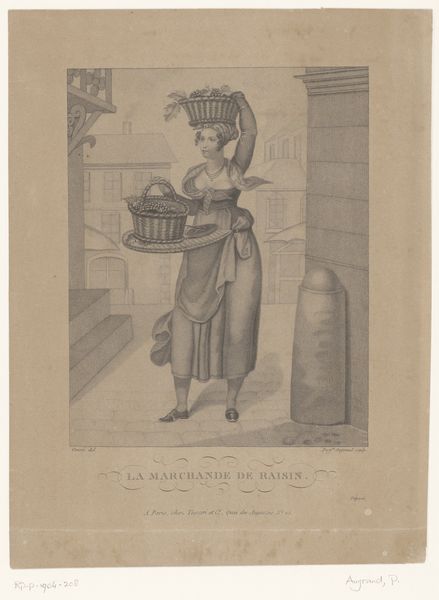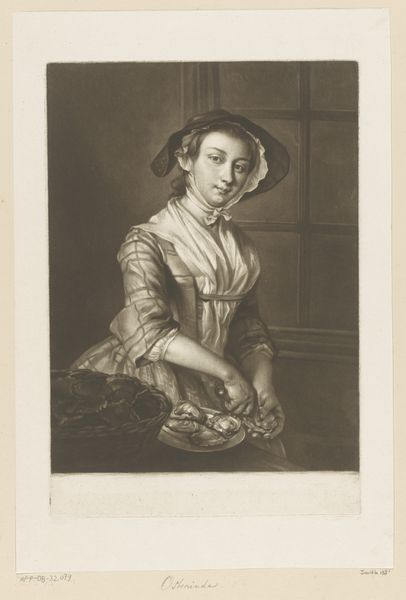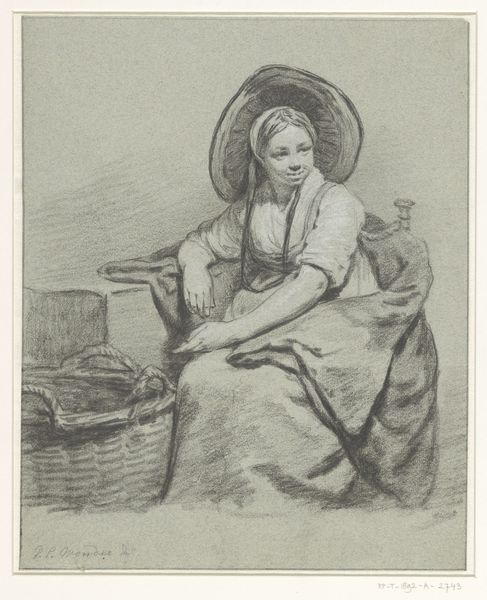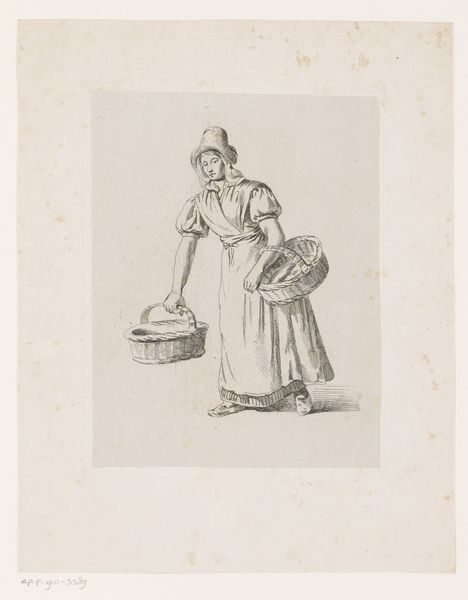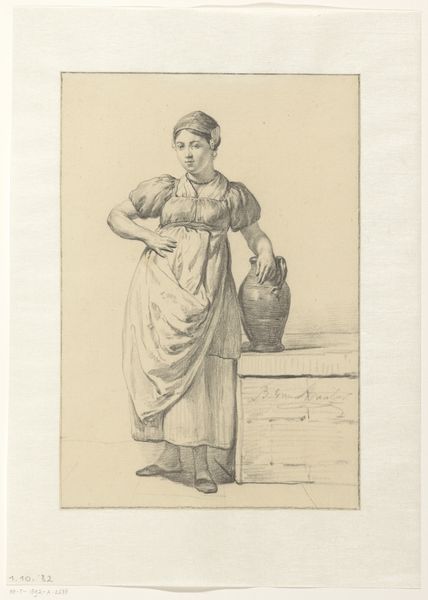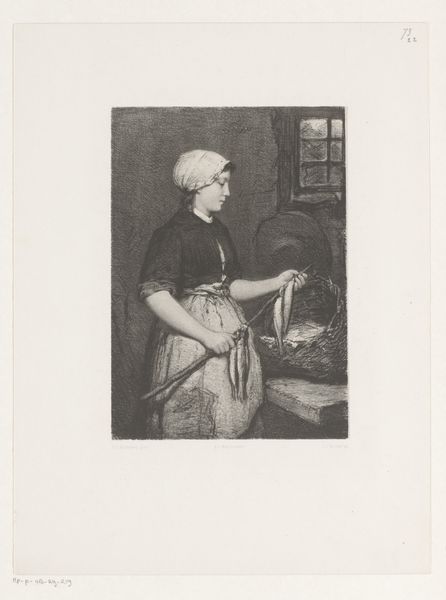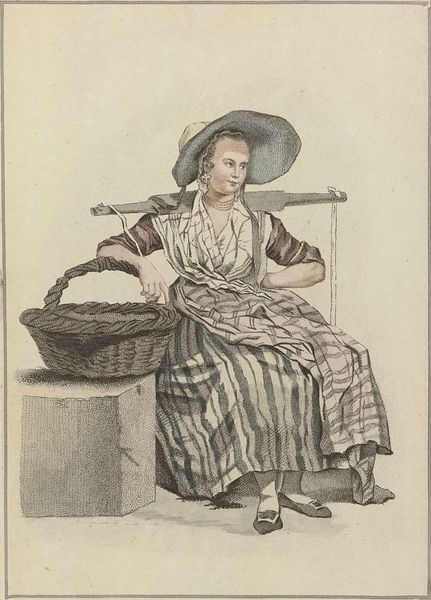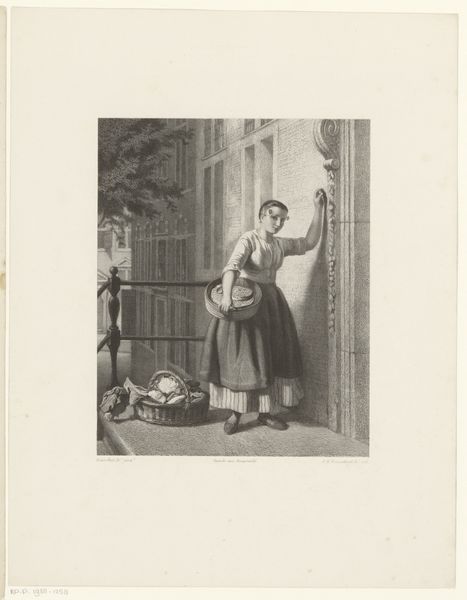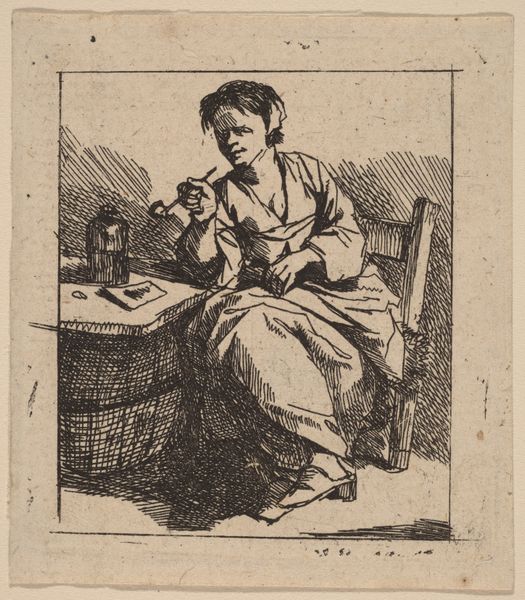
#
portrait
#
neoclacissism
# print
#
fruit
#
19th century
#
genre-painting
Dimensions: height 352 mm, width 251 mm
Copyright: Rijks Museum: Open Domain
Editor: This is "Girl with a Basket of Fruit" by John Dixon, created sometime between 1720 and 1804. It's a print, and what strikes me most is how it blends the everyday with an almost idealized portrait. What does this artwork tell you about the society it came from? Curator: It’s fascinating how this print appropriates and circulates imagery. The composition clearly echoes classical themes and poses that were in vogue, part of the Neoclassical movement. Yet, Dixon democratizes art by making it accessible, translating this image into print, which was reproducible and far cheaper than an oil painting. Consider who the intended audience might have been and the increasing significance of print culture. Editor: So, it's taking a high art concept and making it available to a wider public. I wonder what that says about art’s function at the time? Curator: Exactly. This print reflects a shifting socio-political landscape where access to imagery became increasingly important. While the artwork idealizes a ‘genre scene’, it raises interesting questions: who gets to be portrayed? What messages about virtue and value were being propagated? And, significantly, how does accessibility reshape art's societal role? Think about how the institution of the art market starts changing too. Editor: That makes me wonder, does the choice to depict a ‘commoner’ elevated to portrait status actually challenge social norms or simply reinforce existing class structures? Curator: A crucial question to ask. By idealizing a ‘commoner’, Dixon's print treads a fine line. Is it celebrating the dignity of labour, or romanticizing poverty for a wealthy audience? Was this merely fashionable, like the *bergère* style that Marie Antoinette adopted at court? This points to the complexity of the image and the values it attempts to portray. What is more is the use of print-making allowing images and ideology to propagate quicker and easier within a specific time frame. Editor: I never thought about it like that before! I'm learning to look beyond the immediate image and consider the forces at play that shaped its creation and consumption. Thanks! Curator: Precisely. Considering the socio-political implications encourages a richer and much more revealing understanding of the artwork's broader purpose and effects.
Comments
No comments
Be the first to comment and join the conversation on the ultimate creative platform.
